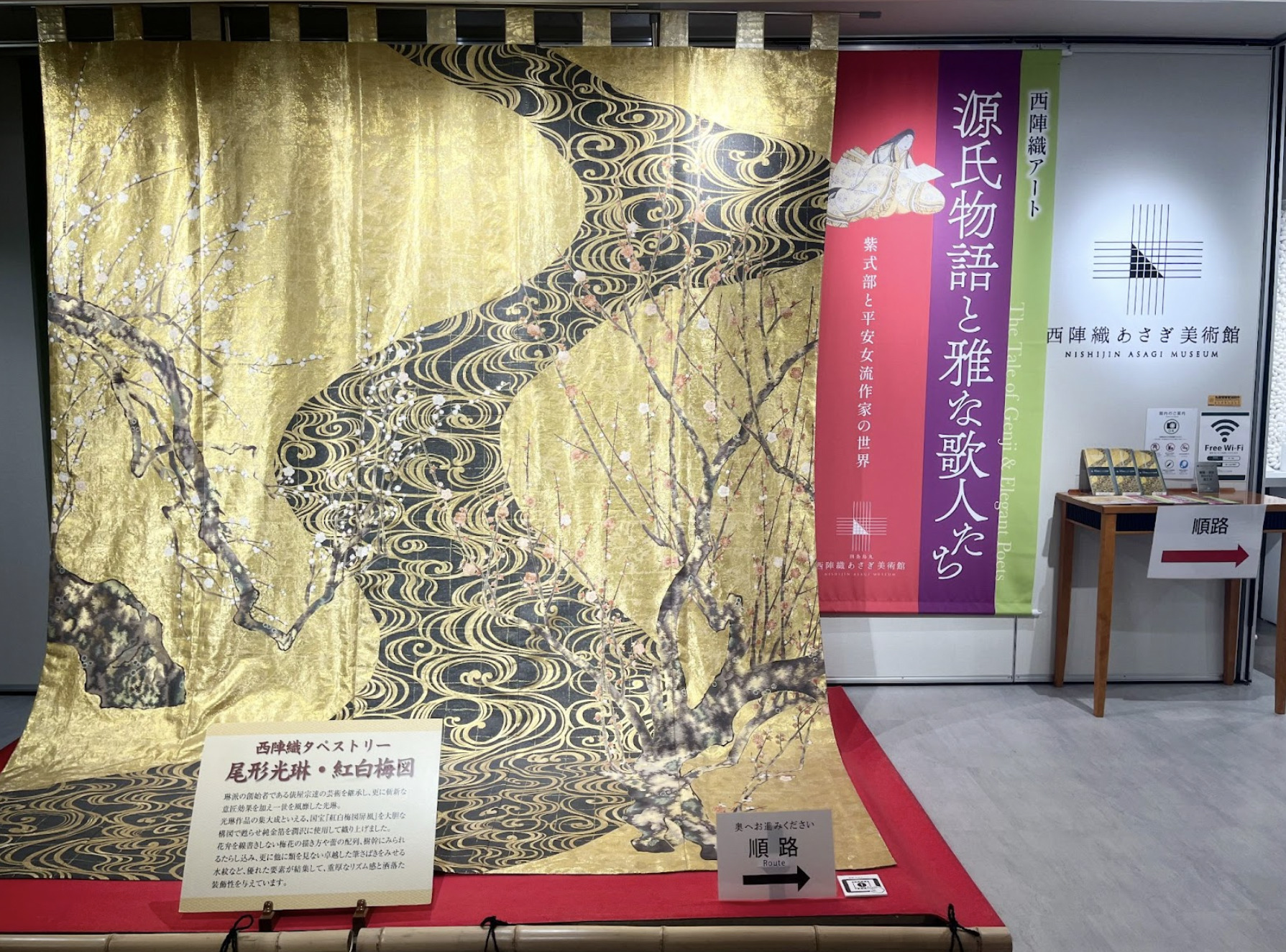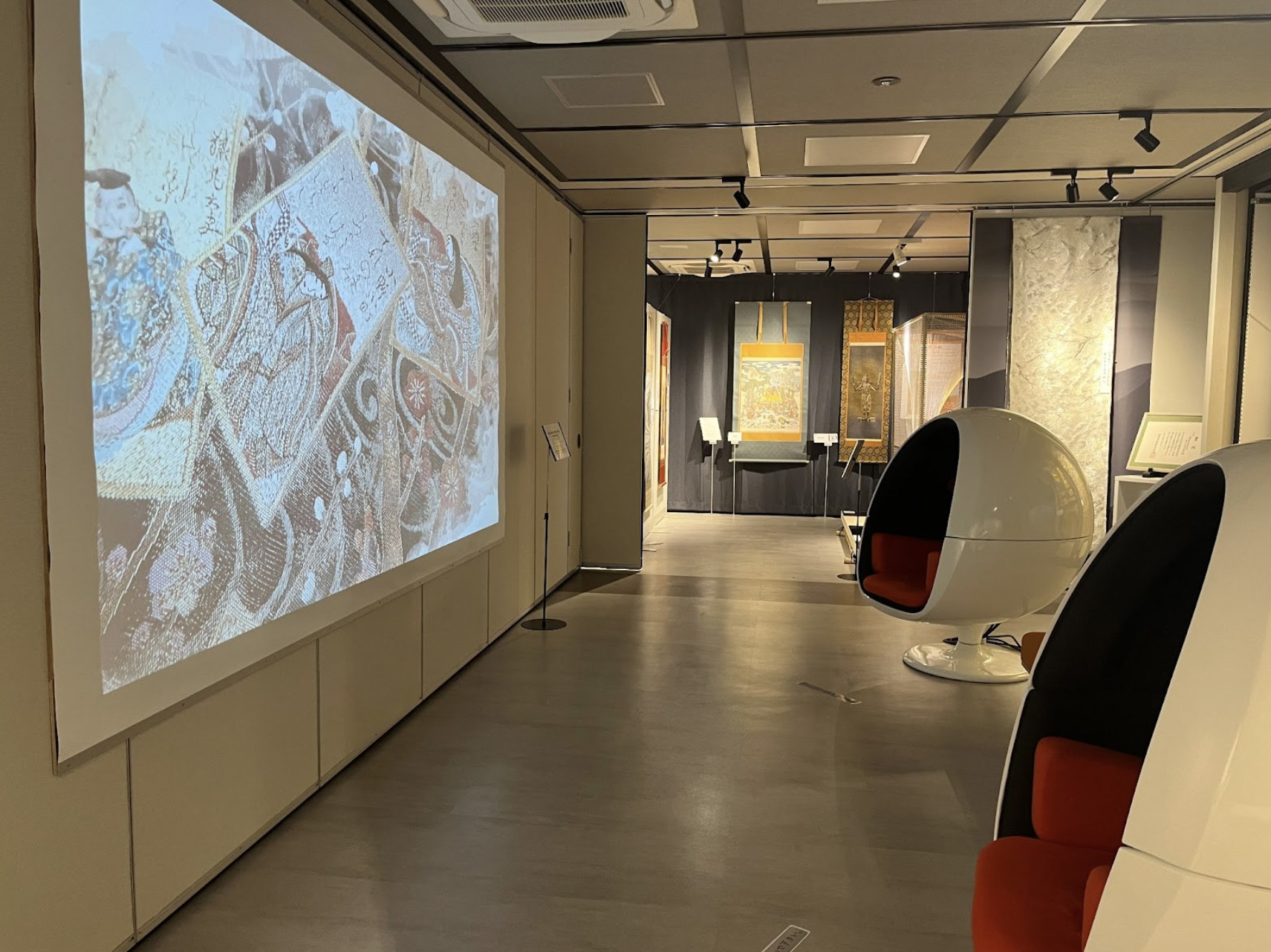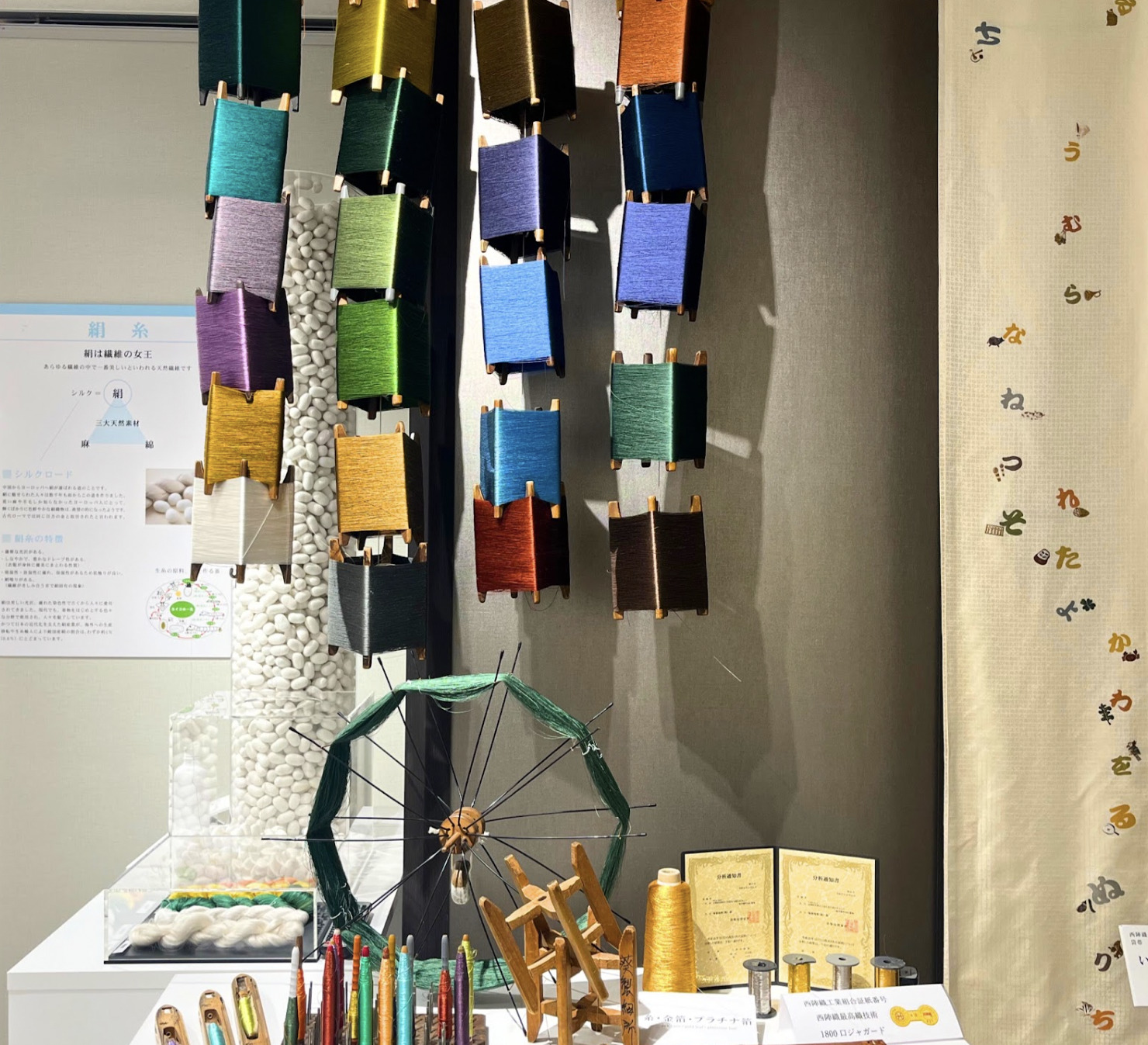ReservationSearch and reserve rooms
Click here to confirm, change or cancel your reservation
Shinkansen accommodation plan
提携法人専用予約
2024.02.29
Japan's oldest traditional craft. Experience the charm of Nishijin-ori at the Asagi Museum of Nishijin-ori
NEIGHBORS

When you get off at Exit 6 of Shijo Station on the Karasuma subway line, the closest station to Hotel Resol Resol Shijo Muromachi, you will see glittering golden Nishijin textiles. The Asagi Nishijin Textile Museum welcomes visitors with Ogata Korin's "Red and White Plum Blossoms," an expression of Nishijin textiles, Japan's oldest traditional industry. We spoke to Takako Matsui, manager of the Asagi Nishijin Textile Museum.

Nishijin-ori has a history spanning more than 1,500 years
The origins of Nishijin-ori date back to the 5th and 6th centuries, and it has progressed with the times up to the present day. Today, its influence is not limited to Japan, but has fascinated the world. It is the result of an industry that truly speaks to the history of Kyoto. At this museum, you can fully experience the charm of Nishijin-ori.

While art museums generally collect artworks from all over the country, this museum exhibits only works created by the operator, Tsukayoko Shoji Asagi Division. From the permanent exhibition to the special exhibition, the original works are special and can only be seen here at the Nishijin-ori Asagi Museum.
Feel closer to tradition through works made with Nishijin-ori

When you hear the word "Nishijin-ori," you probably think of "kimono sashes." For that reason, for people who are not familiar with kimonos, the current understanding is that "Nishijin-ori = Kyoto's specialty product/traditional craft."
The museum was established to promote the image of Nishijin-ori and to make it more familiar to the public. We have devised ways to allow people to experience the charm of Nishijin-ori to the fullest by showing not only obi but also masterpieces and other things that can be expressed through textiles as art and crafts.
Learn about Nishijin-ori not only by viewing the artworks but also through videos

At the entrance to each floor, tablets and pamphlets are available, allowing you to learn about Nishijin-ori from multiple perspectives, including videos and texts, rather than simply viewing the exhibits.

In particular, there is a six-minute screen viewing session at the end of the museum. If you sit in a 3D sound chair, you can enjoy a powerful experience that makes you feel as if you have stepped into a Nishijin textile workshop.
Even those who are worried that they don't know much about Nishijin-ori will be able to fully immerse themselves in the charm of Nishijin-ori after touring the museum. Visitors have said things like, "I was surprised to learn that such delicate things are made of woven fabric," and "It was fun to learn about the background of the works."
The delicate touch created by the warp and weft threads is the greatest attraction of Nishijin-ori

Nishijin-ori is so delicate that you can tell from the photo, but over time the precision has improved to a level of quality that makes it hard to believe it is woven. The secret lies in Asagi's pride and joy, the 1800-knife jacquard weaving technique, said to be the best in Nishijin-ori.
The number of warp threads that make up the obi has changed from 400, 600, 900, to 1800 at present. By lining up 1800 warp threads and passing the weft thread through them, there are more intersections than before. By increasing the number of warp threads for an obi of the same area, the weft threads that express the pattern can now draw the obi's pattern in a finer way. The conventional angular outline is now beautifully expressed as smooth curves.
Many masterpieces expressed through Nishijin textiles

The permanent exhibition features three categories: Buddhist art, Rinpa art, and Impressionism. Among them, the Impressionist works are the most impressive, or at least the most overwhelming. Although they are textiles, they are particular about expressing the differences in paint strokes of artists such as Monet and Van Gogh.

Another appeal of Nishijin-ori is the "yarn-dyed" method, in which the colors are carefully selected to match the piece. The process of dyeing the threads and the lustrous quality of the silk create a texture that is different from the paintings, while faithfully reproducing the masterpieces.
In addition, you can enjoy the sense of depth and three-dimensionality expressed by the warp and weft threads, as well as the colors that appear different depending on the viewing angle, allowing you to enjoy art appreciation that is unique to this museum.

"At the special exhibitions, which change every six months, we want visitors to not only enjoy the works themselves, but also the background to the creation of the works. We hope that as you walk around the museum, including the permanent exhibition, you will be able to immerse yourself in Nishijin-ori and experience its charm and take it home with you," said Matsui.

Nishijin Textile Asagi Museum
電話:075-353-5746
Address: 661, Nijohanshikicho, Karasuma-dori, Bukkojiagaru, Shimogyo-ku, Kyoto (Tsukaki Square 7F)
Access: 1 minute walk from Shijo Station
SNS:https://www.instagram.com/nishijin_asagi_museum/
*For details on business hours and holidays, please check the link above.




